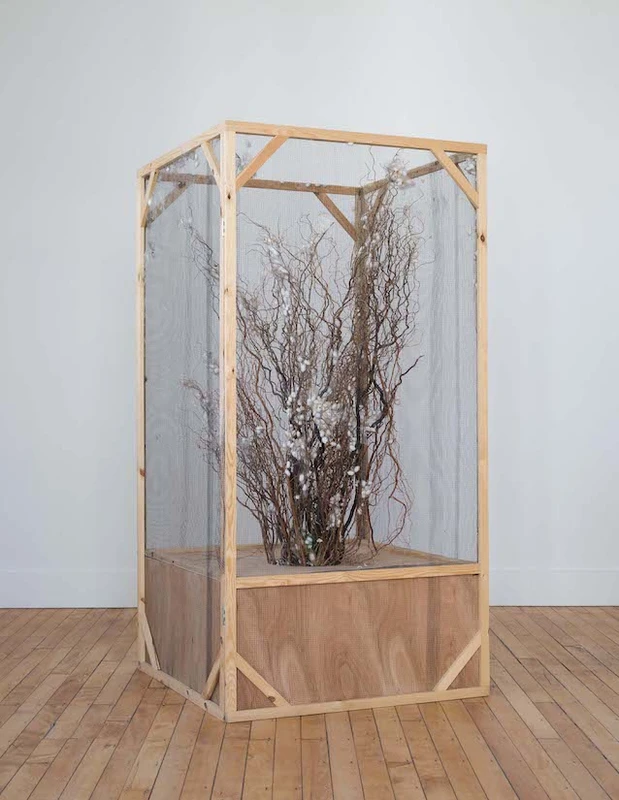Annie Ratti: Bombyx Mori
18 Nov 2021-29 Jan 2022
PV 18 Nov 2021, 6-8pm


The restaging of natural processes has been an aspect of Ratti’s practice over the last 10 years. For this project she transformed her studio into a laboratory in which to breed Bombyx Mori silkworms. Thousands of years of silk-farming have created an interdependence between moths and humans. The little insects are fully domesticated and readily climb up fingers, but the intensive farming has greatly reduced their mobility and they have completely lost the ability to fly.
Through the insights derived from researching and observing these metamorphic creatures, Ratti has created a body of work that displays the cyclical process of their life from birth to death, starting and ending with the eggs. She has collected books on the history of rearing silkworms in her home town Como, in Italy, and the apparatus used for breeding them in the 18th Century is echoed in her works. The exhibition also includes a wearable sculpture in which the intricate structure of silkworm antennas is adapted to human scale, a linking of human and insect that also evokes the metamorphosis of Gregor Samsa in Kafka’s seminal 1915 novella.
This project was undertaken during the lockdowns of the Covid pandemic. In a world emptied of the usual distractions, Ratti’s time was marked by the life cycle of the tiny insects. Her works invite us to observe these creatures from a new perspective and reflect upon the centuries-old relationship our species has with them, but also to recover and reconsider our historical interdependence.